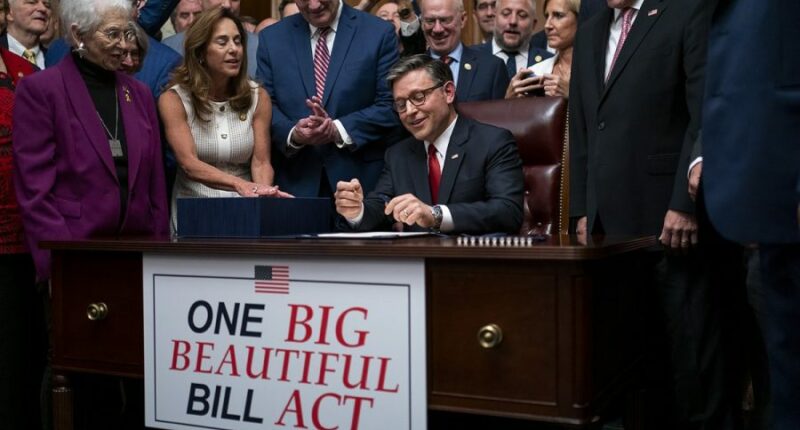Share this @internewscast.com
(The Hill) – The Republicans’ “big, beautiful bill” is set to worsen economic disparity by making the poorest Americans even worse off while significantly benefiting the highest earners, as per a new analysis from Congress’s budget office release Monday.
The Congressional Budget Office (CBO), upon request from top Democrats, revealed that the law’s provisions will result in an average annual gain of $13,600 over the next decade for the top 10 percent of earners, whereas the bottom 10 percent will face an average yearly loss of $1,200.

The findings contradict claims by President Trump and other Republicans that the extensive domestic policy package would uplift workers across all income levels. Democrats have seized on the report to argue that the legislation was always intended to favor the wealthiest individuals at the expense of the working poor.
“They just confirmed Trump is enriching his billionaire friends at the expense of American families,” stated Rep. Brendan Boyle (Pa.), the leading Democrat on the House Budget Committee, on social platform X following the release of the CBO report.
“It is the largest transfer of wealth from working Americans to the ultra-rich in history.”
Passed last month, the “big, beautiful bill” encapsulated nearly all major domestic policy promises made by Trump during his campaign for the presidency. It includes an extension of the broad tax cuts Republicans had passed in 2017, Trump’s first term, set to end at the year’s conclusion, alongside increased spending on border security, military, and domestic energy ventures.
To cover some new federal expenditures, the bill imposed severe cuts on federal programs, such as Medicaid and the Supplemental Nutrition Assistance Program (SNAP), formerly known as food stamps, which aid lower-income individuals. The bill also introduced new limits on ObamaCare subsidies and caps on federal student loans, disproportionately affecting those with lower incomes.
The CBO’s analysis aims to gauge the cumulative effect of the various components of the law, as applied to households at differing income levels.
Most workers will benefit from the law to some degree, largely due to the extension of the 2017 tax cuts, the CBO found. High earners benefit the most — $13,600 for the top 10 percent and $3,200 for the next 10 percent — because they make the most money and tend not to receive benefits from the federal programs set to be cut.
The 20 percent of workers in the middle of the income spectrum will also see a bump: between $800 and $1,200 per year over the next decade, the CBO estimated.
The lowest earners, however, will see a reduction in overall resources under the new law, largely because the cuts in federal programs like Medicaid and SNAP will eclipse any benefits, including the tax cuts, elsewhere in the bill. That negative trend is expected to hit those in the bottom 20 percent of earners, the CBO said, resulting in a $1,200 reduction for the lowest 10 percent of incomes and a $400 reduction for the 10 percent directly above them.
Republicans have dismissed the CBO’s projections in the past, arguing that they fail to take into account the broad economic boost provided by the tax cuts — a “dynamic” benefit the Republicans say benefits people of all income levels.












